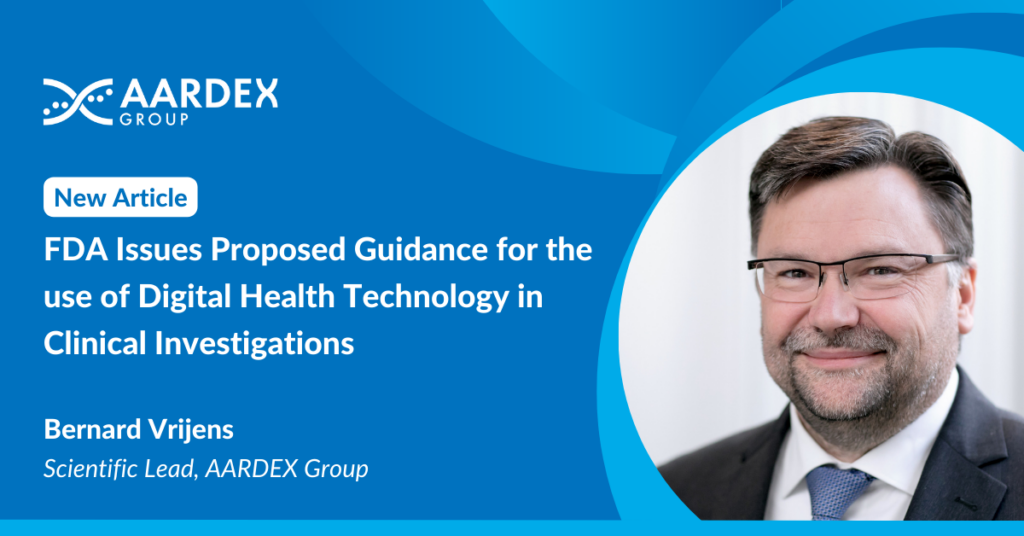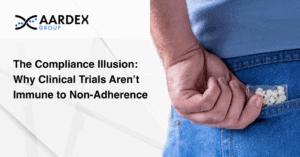In recent years, a multitude of Digital Health Technologies (DHTs) have emerged, many with the ability to solve some of the biggest problems in clinical trials. However, uptake has been slow.
Now, proposed new Food and Drug Administration (FDA) guidelines could change all that by finally giving sponsors, contract manufacturing organizations (CMOs), and contract research organizations (CROs) a framework to work within.
Crucially, Digital Health Technologies for Remote Data Acquisition in Clinical Investigations Guidance for Industry, Investigators, and Other Stakeholders demonstrate how scientific rigor and high-quality user experience (UX) are in no way mutually exclusive. Success, it alludes to, relies on the two-working hand in hand.
Digital Health Technology and Remote Monitoring
According to the FDA guidelines, advances in sensor technology, general-purpose computing platforms, and methods for data transmission and storage have “revolutionized the ability to remotely obtain and analyze clinically relevant information”.
“DHTs used for remote data acquisition are playing a growing role in health care and offer important opportunities in clinical research,” say the guidelines.
By allowing for continuous or more frequent data collection, directly from participants, they provide a broader picture of their daily lives and behaviors. Some DHTs can also capture information from those who might otherwise be unable to report their experiences, such as infants or people living with cognitive impairment, they go on.
DHTs have been developed for implementation at every step along the clinical development pathway, from eConsent to adherence monitoring, and the collection of patient-reported outcomes. Yet they all have a common aim – to make trials more efficient. And while it is true that COVID has accelerated the use of these remote tools, adoption has, in the main part, been slow.
We know that in the Biopharmaceutical Industry, where safety is everything, nothing can be implemented without robust evidence. As the evidence base, and the number of DHTs, have grown, roles in areas such as data management have evolved rapidly, leaving a gap between the theory and the practice of remote data collection.
As such, leading voices have been calling for clear frameworks and guidance on the use and validation of these technologies for some time. The draft FDA document answers that call and could be a step towards the DHT future.
UX and science: One and the same
The draft FDA guidance, which is currently open to public consultation, aims to help stakeholders select and validate DHTs.
Ensuring technologies are fit for purpose – something that may be a challenge for sponsors and CROs used to working with traditional methodologies and unsure of how to move new solutions into primetime – is essential. The solution must correspond to the clinical outcome under the microscope and be matched to how the cohort in question may use it, so there is no one-size-fits-all here.
A partnership is a key to building this understanding, say officials. “Sponsors are encouraged to engage with the DHT manufacturer or other parties to leverage any existing information, as appropriate, to support the DHT’s suitability for use in the specific clinical investigation,” says the publication, which also highlights the importance of early engagement with the FDA.
Throughout the document, there is a strong emphasis on how the usability of technologies is central to their success. Design and ease of use may influence whether trial participants will use the DHTs for the duration of the clinical investigation, and in the manner described in the protocol, it says.
This is so important because it doesn’t matter how technologically advanced a solution is if it is challenging to use. To date, the industry has focused on the scientific validity of technologies, but, as these guidelines explain, user experience is a crucial part of the puzzle. Participant engagement must be top of the DHT wish list if sponsors and CROs are to collect meaningful data remotely.
Digital Adherence Monitoring, for example, is most effective when it is frictionless. This can be a problem for some modern methods of monitoring medicines-taking behavior, such as asking patients to fill in an e-medication diary in real-time, or record and submit a video of themselves administrating the medication.
Any solution that necessitates patients’ active involvement is bound to fail because it is self-selecting, meaning only those who are engaged in the protocol and with the technology will use it. But in drug development, initiatives must collect all data from all participants.
Furthermore, by adding extra steps alongside what might already be a challenging dosing regime, such approaches only serve to place more pressure on the person and make poor adherence more, not less, likely. If we are to support people to deliver their data, we need to be removing barriers, not putting them up.
All of AARDEX Group’s solutions, which combine smart packaging and powerful data analytics and visualizations, asks of patients, for instance, is for them to take their medicine. Data is collected as it should be, automatically and in the background, without requiring regular input from the patient. It’s all about usability.
So central is the ease of use to the guidelines that they recommend usability studies be carried out as part of the validation process.
This advice, along with the qualification criterion for the practical use of DHTs in clinical trials, could prove invaluable to Sponsors, CMOs, and CROs keen to embrace the potential of new tools, but unsure how to move from theory to practice.
Practical Advice
The document provides practical, tangible advice on DHT adoption in areas that have, to date, been painted a shade of gray. For example, it notes that DHTs are generally exempt from premarket clearance or approval requirements.
It also offers help with navigating the quagmire of privacy issues that can sometimes be associated with remote data collection. It recommends a full evaluation of the risk of potential disclosures, whether that be via the DHT, its platform, or electronic data repository, and implement appropriate safeguards. Sponsors and CROs should also consider including this information in the informed consent documents.
Other tips include training trial participants and trial personnel on DHT use, offering a technical support program, and developing a risk management plan to address potential problems such as DHT loss or damage.
A safety monitoring plan, which sets out how any abnormal measurements are to be reviewed and managed, and a contingency plan, to cover DHT changes such as system updates, is also suggested.
In terms of validation, it provides a wealth of specific examples across DHTs, software, and computing platforms. Validating a sensor-based solution, for example, may involve comparing the precision and accuracy of a step counter when worn on the waist to when worn on the hip, calibrating for stride length, and comparing the results with a validated reference means of measurement.
This can be a time-consuming process, so another option might be selecting technology that comes with a robust evidence base as standard. For example, AARDEX’s Medication Adherence Tools are underpinned by our MEMS® technology which has been extensively validated across multiple conditions with its use documented in more than 830 peer-reviewed publications.
A DHT future
By its publication, the FDA’s draft guidance tells us that DHTs are here to stay – and that sponsors, CMOs, and CROs must take the proper selection of tools seriously.
Among the advice is the recommendation that approval submissions set out how and why a particular DHT was used in the clinical trial – if they are to select the most appropriate tool and explain the logic behind their decision, sponsors and CROs need to be aware not only of available technologies but of their pros and cons in various scenarios.
Underlying all this is a focus on usability and an understanding that UX and scientific validity are two sides of the same coin. Technological solutions must be as easy for patients to use as they are evidence-based. Because if people don’t use them as intended, DHTs threaten, rather than enhance, data quality and trial efficiency.
And with that in mind, it’s time to take remote data collection to the next step.
Read the full draft guidance here.



